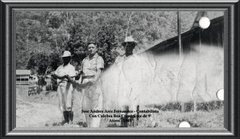UNTIL RECENTLY CHARLOTTE, N.C., WAS THE booming banking hub of the South, home to Bank of America (ticker: BAC) and Wachovia. BofA's woes are well documented, and Wachovia was rescued last year by Wells Fargo (WFC).
In nearby Winston-Salem, meanwhile, the much smaller BB&T (BBT) quietly and profitably has been building a bigger footprint across the mid-Atlantic and Southeast. The bank now is a big player in its own right, with assets of $165 billion and a stock-market capitalization of $17 billion.
If BB&T's revenue continues to rise and loan defaults subside, its shares could rally at least 30%, into the low-30s, from Thursday's 24.68. BB&T "is going to be a leader coming out of this cycle," says Lisa Welch, portfolio manager of the John Hancock Regional Bank Fund (FRBAX), which owns shares.
Launched in 1872, BB&T bills itself as "The Best Bank in Town," playing up its status as a community bank with strong customer relationships. That business model has helped its stock hold up well. With a total return this year of negative 5%, BBT has outperformed the KBW Regional Banking Index, which is down 28%.
BBT often wins praise for its solid underwriting and strong revenue growth. But its commercial-real-estate portfolio, amounting to roughly 17% of its $107 billion book of loans and leases, has been cause for concern. "It's clear they have somewhat heavier exposure to commercial real estate than some of their peers," says Jerry Senser, co-portfolio manager of MainStay ICAP Equity (ICAUX), a large-cap value fund that owns the stock. "But historically, they have run a very conservative credit culture, and they will ultimately weather this storm and generate strong earnings."
As of Sept. 30, BB&T held $1.3 billion of foreclosed real estate. But the amount of foreclosed property on its books is leveling off. The largest foreclosed asset is valued at $19 million -- chump change compared with many real-estate developments that have gone awry. BB&T doesn't lend money for huge real-estate projects, which has "kept us out of a lot of the high-rise projects that basically have no rents today," says Chief Financial Officer Daryl Bible.
Like many banks, BB&T slashed its dividend earlier this year to conserve capital. It now pays out 15 cents a quarter, down from 47 cents, and sports a 2.4% yield. It has repaid the government its $3.1 billion in TARP, or Troubled Asset Relief Program, funds, and its Tier 1 common equity as a share of risk-weighted assets is a solid 8.4%.
Another closely watched measure -- the percentage of net loan charge-offs -- was 1.71% at the end of the most recent quarter, down slightly from the previous quarter. That's far lower than peers such as SunTrust Banks (STI), at 3.33%, and Regions Financial (RF), at 2.86%.
View Full Image
Davis Turner/Bloomberg News
Early-stage delinquencies showed some signs of stabilizing, as well. Loans 30 to 89 days past due totaled just under $1.7 billion, below the level of three months ago.
THE MOST NETTLESOME PART of BB&T's commercial- loan portfolio is acquisition, development and construction, or ADC, loans, which bankroll smaller residential developments. As of Sept. 30, nonaccruing assets in that category were a high 12.08%. But these loans, totaling $6.3 billion, account for only about 6% of the portfolio. BB&T Chief Executive Kelly King told analysts last month that the portfolio was "under control" and adequately reserved, though he added the bank expects to see "further deterioration."
BB&T's residential mortgage business doesn't hold a lot of subprime loans. Nonaccruals stood at 4.31% at the end of the quarter, although the percentage was much higher on Florida properties. Fortunately, the bank's exposure to Florida is much smaller than its presence in markets such as the Carolinas, Virginia and Georgia. Mortgage banking accounted for income of $144 million, up from $83 million a year earlier.
Amid the downturn, BB&T has been increasing revenue at a healthy clip, thanks to businesses such as mortgage banking and insurance brokerage. And, unlike Regions and SunTrust, BB&T continues to be profitable. It posted earnings of 23 cents a share in the third quarter, down from 65 cents a year earlier. Revenue rose an impressive 16%, helped by a rise of a 12th of a percentage point in net interest margin -- the difference between what the bank receives on its loans versus what it pays depositors.
The Bottom Line
Unlike competitors, BB&T has remained profitable amid the financial crisis. Its shares could rally at least 30%, to the low 30s, from today's 24.65.
A big factor behind that margin expansion was the August acquisition of Colonial Bank, which gives BB&T a bigger foothold in Alabama and Florida. It's a good deal, because the Federal Deposit Insurance Corp. covers most of the losses on assets acquired from Colonial. The Colonial deal also boosts client deposits, nearly $104 billion at the end of the quarter versus $80 billion a year earlier. Last year's money-market crisis helped BB&T gain new deposits, as did the troubles of competitors such as Wachovia.
If the economy continues to improve, BB&T's stock could gain 30%, says MainStay ICAP's Senser. Other investors see even greater upside. In almost all ways, BB&T is poised to best competitors as the financial crisis recedes.
In the final analysis, your attitude determines your effectiveness in everything, every time! LGL
Subscribe to:
Post Comments (Atom)






No comments:
Post a Comment